Inspired Nutraceuticals is back with their first major product launch since Chris Waldrum sold the company, and it's another liquid dietary supplement following their recent Ember Serum P.M. nighttime carnitine launch:
Inspired Nutraceuticals FSU Serum: Pre-Workout Liquid Pumps!
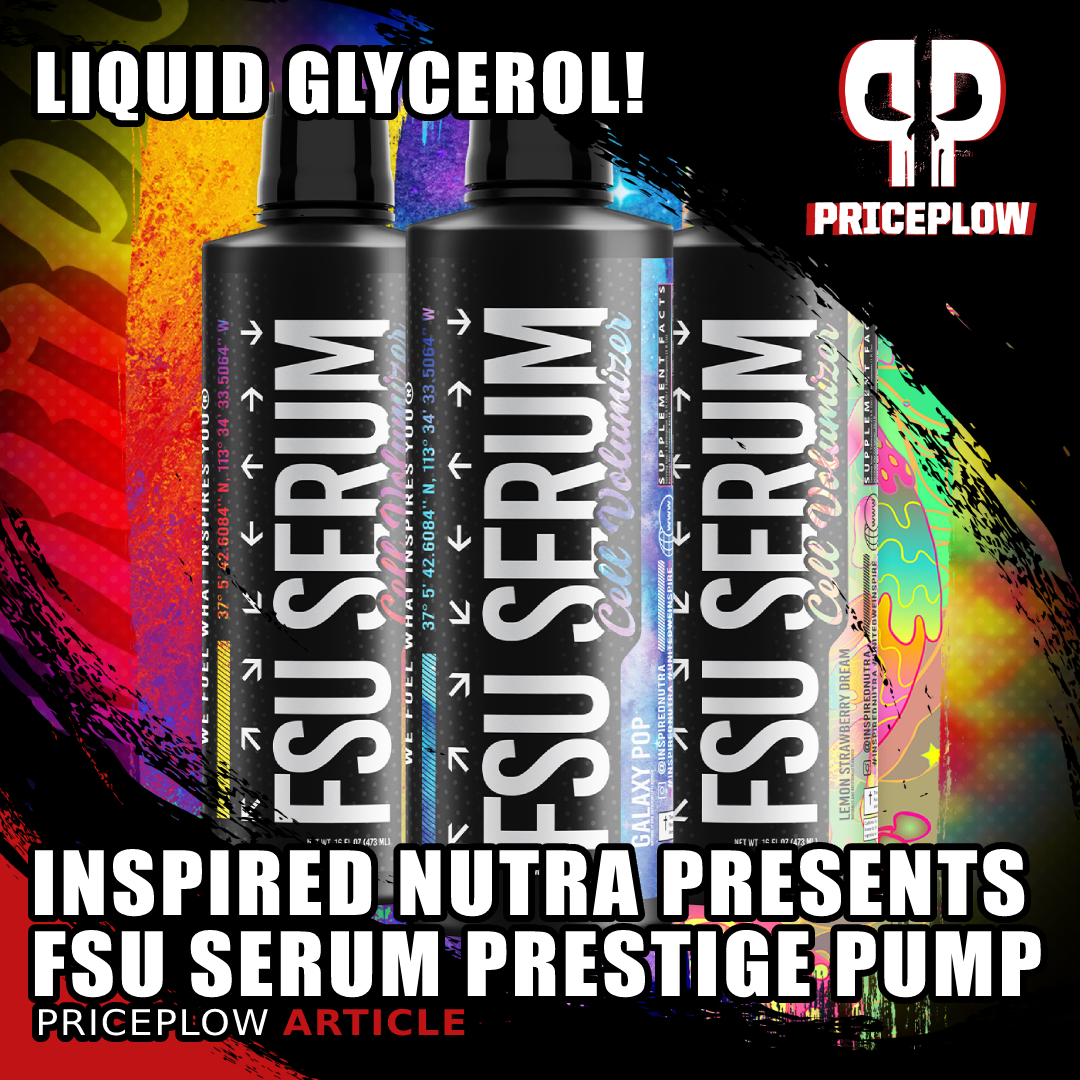
Inspired Nutraceuticals is bringing LIQUID GLYCEROL to the pre-workout pump market with FSU Serum, loaded with betaine nitrate and 20g glycerol and boosted by electrolytes from sodium and potassium!
Inspired's customers who are seeking a unique way to get pumped will be excited to try the all-new Inspired Nutraceuticals FSU Serum, a stimulant-free pre-workout pump liquid made with 20 grams of GlycoClear glycerol per serving - a serious amount of hyperhydration-inducing glycerol in just two tablespoons of liquid!
It's combined with a heaping 2 grams of betaine nitrate and 200 milligrams of sodium (from 500 milligrams salt) and 250 milligrams of potassium (from potassium citrate) to bring incredible hydrating pumps straight to the muscles.
So drink this one with plenty of water and get ready to swell up like never before!
At the 2023 Arnold Sports Festival, we talked to Inspired's President and CEO Landon Suggs along with their VP, Kayla Rossi, who couldn't be more excited about the direction of the brand. With new investment will bring a ton of new products - this is only the beginning!
Our breakdown's coming soon below, but you can check Inspired's website for availability below:
Inspired Nutraceuticals FSU Serum – Deals and Price Drop Alerts
Get Price Alerts
No spam, no scams.
Disclosure: PricePlow relies on pricing from stores with which we have a business relationship. We work hard to keep pricing current, but you may find a better offer.
Posts are sponsored in part by the retailers and/or brands listed on this page.
This area is reserved for Team PricePlow's upcoming videos.
Subscribe to our channel and sign up for notifications so you catch it when it goes live!
Inspired Nutraceuticals FSU Serum Ingredients
Each two tablespoon (1 fluid ounce) serving of FSU Serum contains the following:
-
GlycoClear (as 99.7% Pure Glycerol) - 20,000 mg
Glycerol is a sugar-alcohol that's a byproduct of your fatty acid and glucose metabolism.[1,2] It's required for gluconeogenesis,[3] the process by which your liver synthesizes glucose from non-sugar substrates like protein.
And unlike what we've seen in many powder-based glycerol supplements, Inspired's decision to go with liquid in FSU Serum brings a huge dosage!
Your body distributes glycerol systemically, to all tissues except your brain and eyes.[4] In its resident tissues, glycerol helps regulate the water balance of your cells by manipulating extracellular osmotic pressure.[4] In osmosis, water naturally moves from an area of higher solute (dissolved solids) concentration to one with lower solute concentration.[5] Thus, by increasing osmotic pressure, glycerol naturally forces a higher-than-usual amount of water into your cells.[6]
This glycerol-driven osmotic pressure creates a state called cellular hyperhydration, in which the affected cells are – well – hyperhydrated. The surplus cellular water content comes with some key athletic advantages, namely increased thermal resistance, improved nutrient availability, enhanced performance, and faster recovery.[7]
Naturally, glycerol works best when taken with lots of water, so prioritize drinking a little extra if you want to get the most from this ingredient.[8]
It's worth noting that 20 grams of pure glycerol brings 80 calories -- it is a carbohydrate, after all! Those who are dieting will want to incorporate this into their macros. Even if low-carb, however, don't fear carbs in and around our workout - this is the time to get them in!
-
Betaine Nitrate (as NO3-T) - 2,000 mg
An epic combination of betaine combined with nitric acid, we have betaine nitrate, which we also saw in the original FSU powder. Let's break it down in two:
-
Nitrate benefits
So what does nitrate do in your body? After ingestion, it gets converted into nitrite. That nitrite is then shuttled into your bloodstream through the intestinal wall, and circulates to your salivary glands which convert the nitrite into nitric oxide (NO).[9-11]
Anyone who's in the market for a pre-workout supplement probably doesn't need an introduction to NO – this is the molecule responsible for the pump that comes from vasodilation, a phenomenon where your arteries expand in diameter to permit better circulation. NO-induced vasodilation leads to decreases in blood pressure and heart rate, and increases in athletic performance.
A 2013 meta-analysis[12] on nitrate supplementation found that it can:
- Increase circulation[13]
- Improve aerobic efficiency[13-16]
- Enhance strength[17,18]
- Prolong athletic endurance[15,16]
- Accelerate recovery
- Increase cellular energy availability[18-20]
Veteran supplement consumers will recognize that these are more or less the same effects as more commonly-used preworkout NO boosters like citrulline – the upregulation of NO is the common mechanism here.
-
Betaine – ergogenic aid
Trimethylglycine (TMG), commonly known as betaine, is an ergogenic aid, which is defined as a substance or technique that promotes athletic performance.[21]
A landmark 2013 study showed that 2.5 grams of betaine every day can have profound effects on body mass and strength[23]
Betaine is a methyl donor, meaning it carries methyl groups through your body to sites where they're needed for certain metabolic processes. One of these is the regulation of blood homocysteine levels – without enough methyl groups available, homocysteine levels can get too high,[22] which can increase your risk for cardiovascular disease.[23,24]
Supplementation with methyl donors like betaine is thus not only a good immediate performance bump, but also an investment in long-term cardiovascular health.
Betaine is also, like the glycerol we just discussed, an osmolyte. It confers the same benefits, keeping cells optimally hydrated[23,25] and insulated from the damaging effects of heat stress.[26]
Research shows that betaine supplementation can significantly improve strength, power, athletic endurance, and even, if taken long-term, body composition.[27-32]
-
-
Sodium Chloride (Salt) - 500 mg (yielding 200 mg sodium, 9% DV)
One of our favorite industry trends is the movement towards larger doses of sodium in preworkout formulas. Although sodium has gotten a bad rap in recent decades, there's an excellent reason for using sizable doses in these supplements.
Your body needs all the electrolyte minerals – which includes not just potassium, magnesium and calcium, but also sodium – to perform at peak athletic ability. That's because all the electrolytes are needed for efficient and forceful muscular contractions.[33]
A strenuous workout – which is what we're assuming most preworkout consumers are going for – is liable to eliminate lots of sodium from your body through sweating. If this sodium isn't adequately replenished in a timely manner, performance and recovery can suffer as a result.[34]
Additionally, recent scientific research has suggested that the risk associated with higher-than-necessary sodium intake may have been overestimated.
Although the official recommendation is to ingest less than 2,300 milligrams of sodium per day, systematic reviews of the sodium literature have found that there's a J-shaped mortality curve associated with dietary sodium intake.
Accordion to this data, the lowest risk of cardiovascular disease appears to be with sodium intakes between 3,000 mg and 5,000 mg per day.[35] Even past 5,000 mg, the harm associated with excess sodium appears to be confined to people with pre-existing high blood pressure.[35]
As always, don't change your diet without asking your doctor, but if you're an athlete or anyone who sweats a lot, you may wish to consider getting the upper end of that sodium range from food and supplements.
-
Potassium (from Potassium Citrate) - 250 mg (6% DV)
The powdered version of FSU also had a huge upgrade, keeping the nitrates and electrolytes but adding 3D PUMP Breakthrough!
Potassium is another electrolyte mineral just like sodium – and important for the same reasons sodium is, too. However, your potassium levels also have far-reaching implications for cardiovascular health.[36]
Electrolytes work together to support peak performance – one example of this is the fact that adequate potassium intake helps your body retain calcium,[37,38] another important electrolyte.
The sodium to potassium ratio
Again, although the standard approach to reducing blood pressure is cutting sodium, there's actually quite a bit of research that shows the ratio of sodium to potassium matters more than absolute sodium or potassium intake.[39,40]
For example, low sodium-to-potassium ratio is associated with the onset of hypertension,[41] as are other manifestations of cardiovascular disease.[42-46]
We advocate for manipulating this all-important ratio by increasing potassium intake, as peer-reviewed research shows that cutting sodium to the necessary levels is practically impossible while eating a balanced diet.[47,48]
Potassium needed for vasodilation
Finally, we want to keep potassium levels topped off because the interaction between sodium and potassium is what drives vasodilation through the polarization of endothelial cells.[41,49,50]
It's worth noting that 20 grams of pure glycerol brings 80 calories -- it is a carbohydrate, after all! Those who are dieting will want to incorporate this into their macros. Even if low-carb, however, don't fear carbs in and around our workout - this is the time to get them in!
Flavors Available

Since 2014, Inspired has been coming out with some of the most innovative products on the market to 'fuel what inspires you'.
The previous version of Inspired Nutra's FSU was a blockbuster - and one of the first (if not the first) supplements to utilize 3DPUMP Breakthrough alongside even more betaine nitrate. You can stack them together if you're really looking to have a day - but it's honestly not necessary.
Inspired is set for an epic run
After talking to Kayla and Landon at the 2023 Arnold Sports Festival, we're nearly as excited as they are about the future of the brand.
They told us that with the new investment on board, they can finally do what they've always wanted to do with the brand. And that means unique product formulations with epic branding - exactly what you're seeing here with their inaugural launch in FSU Serum.
When talking about dietary supplements with glycerol inside, one of the main critiques is that the dosage in powders are too small compared to research studies, and too much silica needs to be added, lowering the yield. The solution around this is with glycerol liquid. You can't put this into a dry tub, but you sure can shoot it down with a ton of water to boost your pumps.
And it's all the more potent that Inspired added an incredible sodium/potassium blend with a solid surge of betaine nitrate as well. Too few brands ignore the potassium, but not Inspired. This combination is how you push a vasodilation-based hydration pump. Drink it with plenty of water!
We can't wait to see what else Inspired has in store -- sign up for our Inspired News alerts below to find out:
Inspired Nutraceuticals FSU Serum – Deals and Price Drop Alerts
Get Price Alerts
No spam, no scams.
Disclosure: PricePlow relies on pricing from stores with which we have a business relationship. We work hard to keep pricing current, but you may find a better offer.
Posts are sponsored in part by the retailers and/or brands listed on this page.
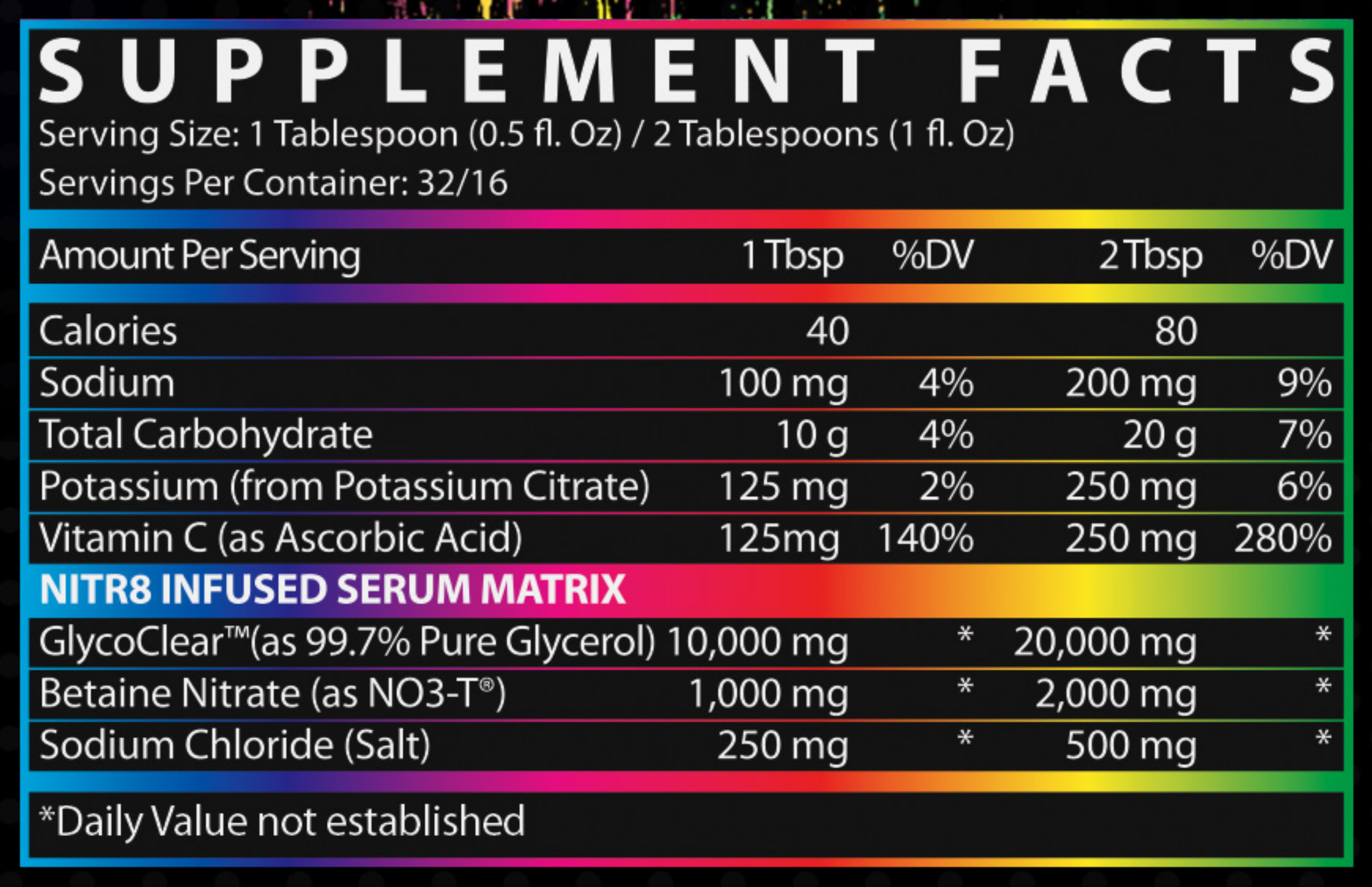
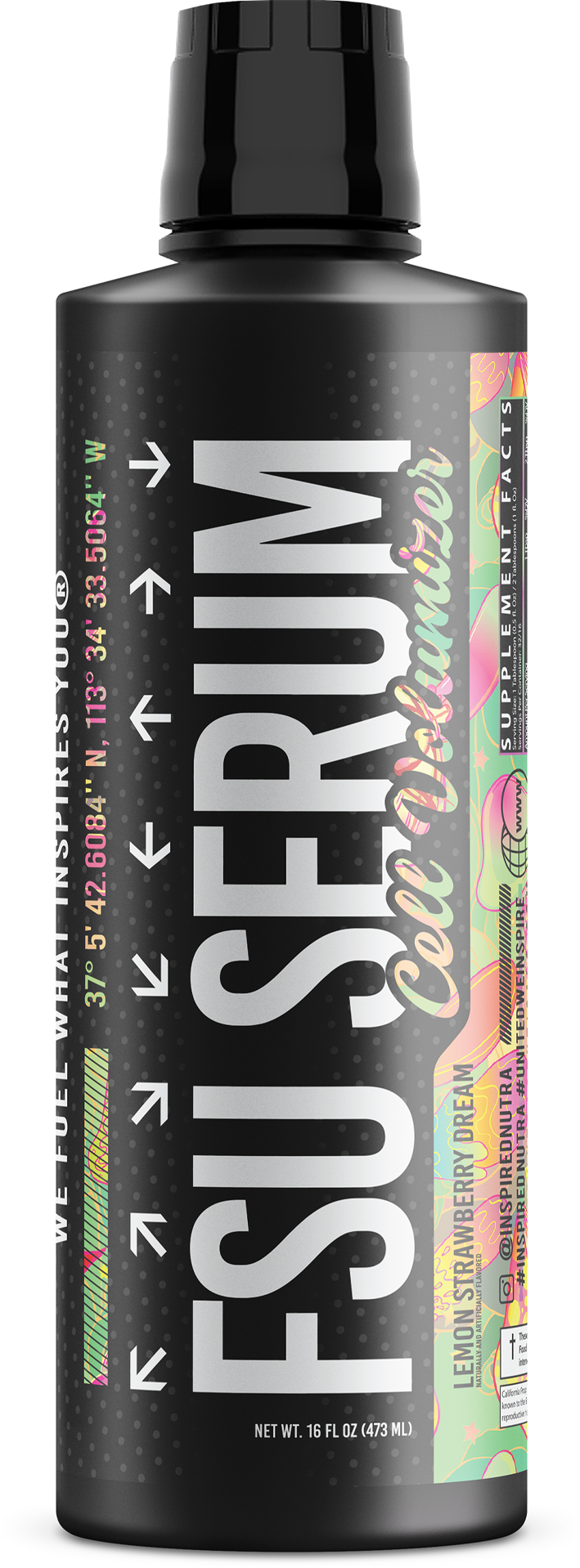

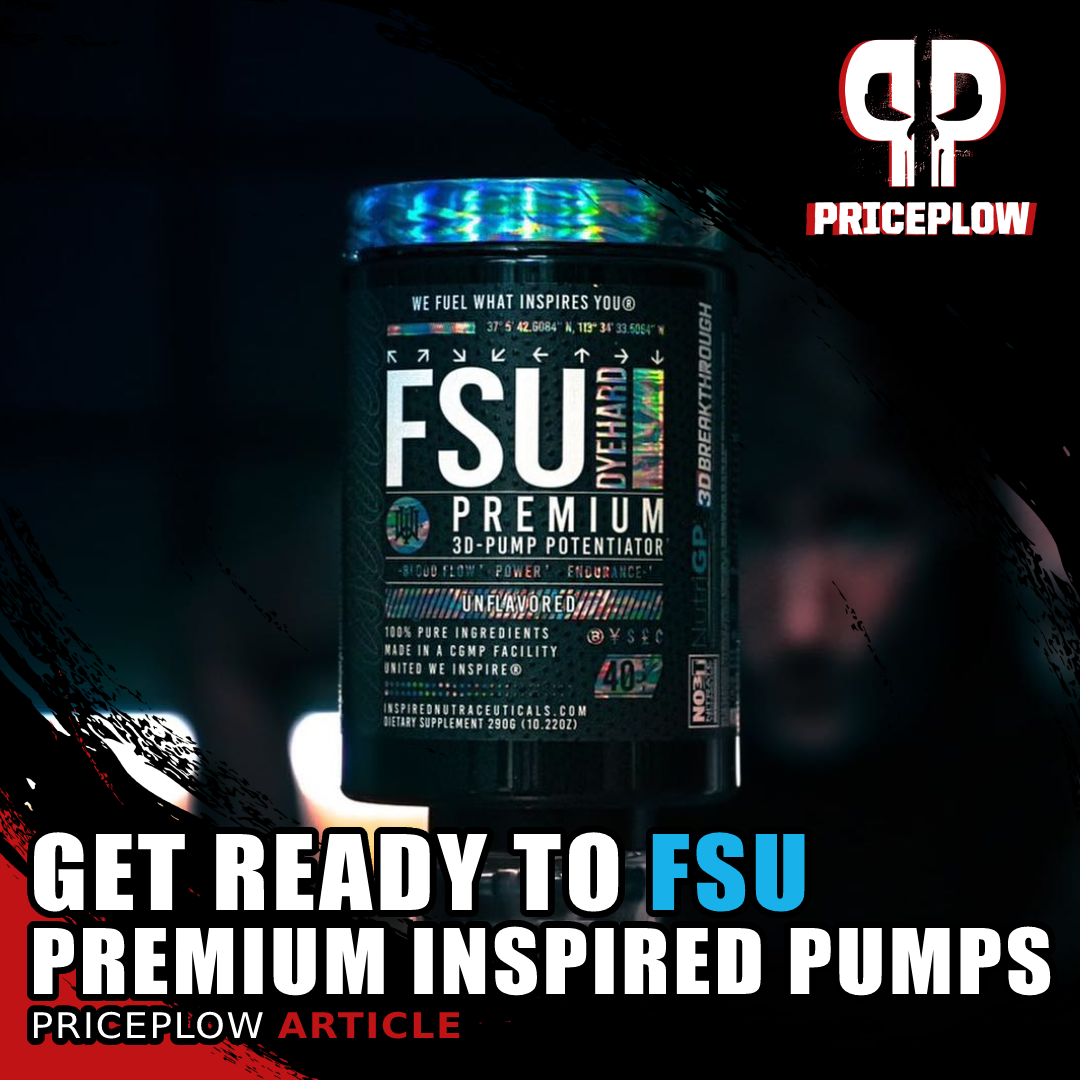
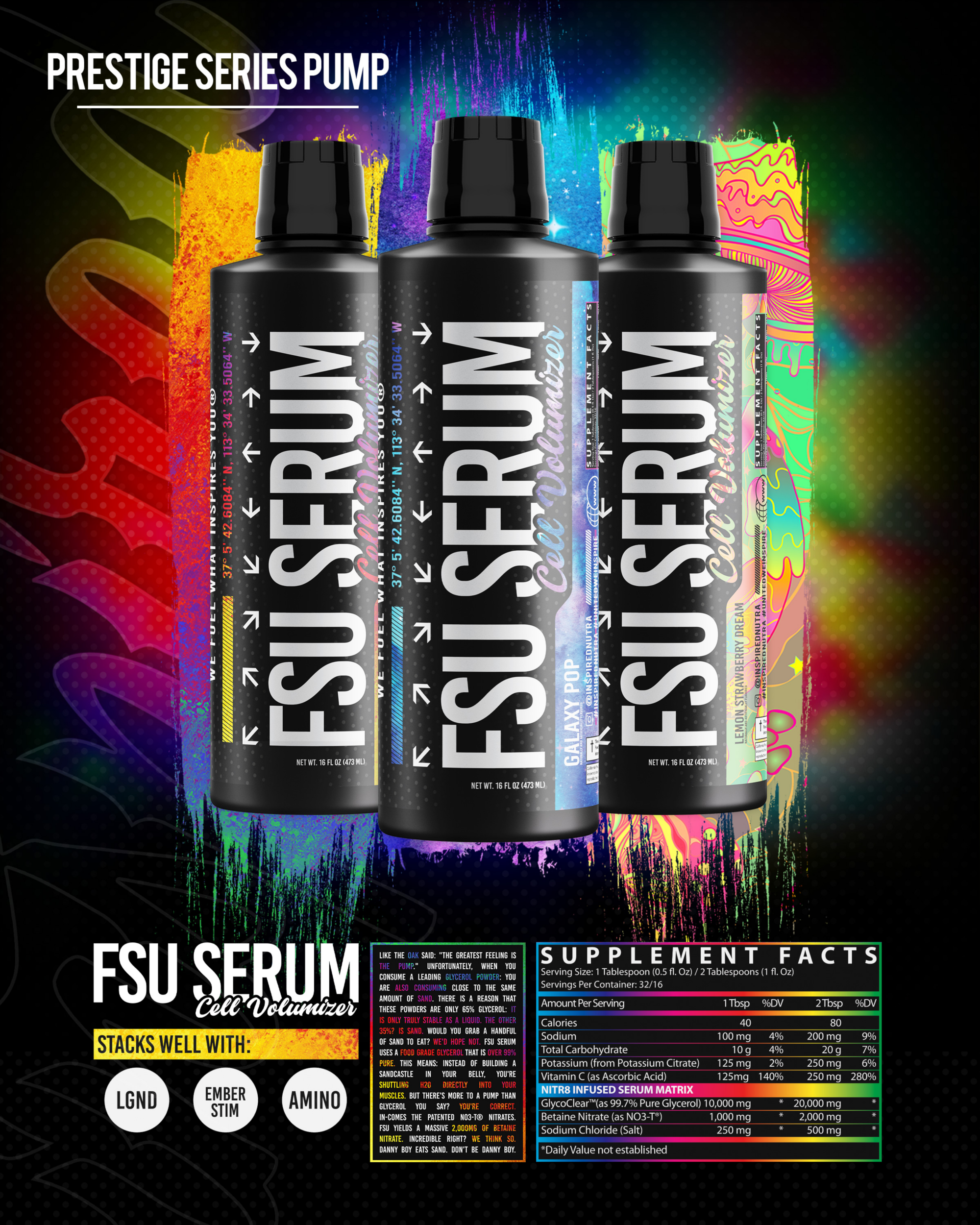


Comments and Discussion (Powered by the PricePlow Forum)